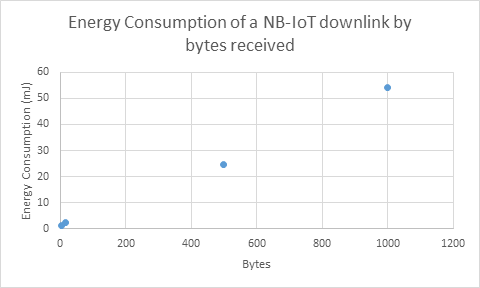NB-IoT uplink and downlink - Is it really this small of a window? Energy consumption problem.
-
Hello everyone, I've been collecting some current traces in NB-IoT using the FiPy, yet I've come across something that made me wonder if I'm not making a mistake.
Did anyone try to see how much energy it takes for FiPy to send an uplink and/or a downlink?I'm using a PIN to start/stop capturing current profiles of different LoRa and NB-IoT phases and when I was doing the
same thing in LoRa, whenever I sent an uplink I had to see a time.sleep() to capture the whole RX's windows.I'm using MQTT.
So what I do is I put the PIN to HIGH and run the command to uplink with NB-IoT firstly, then, my multimeter stops capturing after the command is done. Only then receiving downlinks and capturing the whole current again but I don't know if I'm capturing the whole event ( that means that the time is less than it should be so the consumption would be wrong). I've searched for this information online but unfortunately I've only found two links saying different things.Uplinks:

Now, the time it took for each amount of bytes (s):
5 bytes: 0.002680013
15 bytes: 0.002799994
500 bytes: 0.002799993
1000 bytes: 0.003039995Downlinks:

5 bytes: 0.003239995
15 bytes: 0.003519996
500 bytes: 0.03688002
1000 bytes: 0.08055998I've also tried to add a deep sleep right after the uplink and the message isn't sent, does this mean I'm not capturing the whole event?
Thank you!